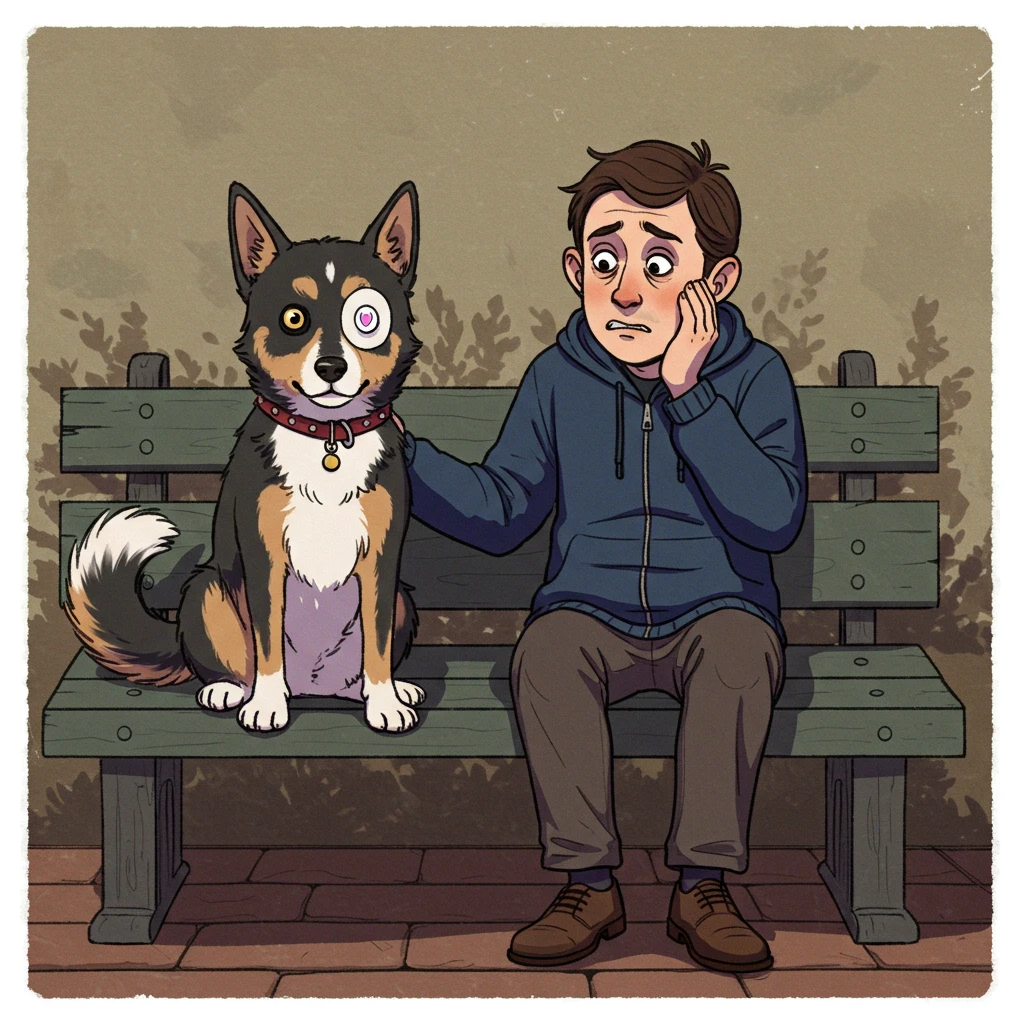The mental health of dogs is undeniably a crucial topic, not just for devoted pet owners but for animal welfare professionals across the board. It’s truly fascinating how, much like us, our canine companions can experience a spectrum of mental health challenges that profoundly impact their behavior and overall quality of life. Grasping the intricate connections between a dog’s mental state and their actions is absolutely essential if we’re to ensure a truly balanced and healthy environment for our beloved four-legged family members. This article dives deep into various facets of canine mental health, from spotting those subtle signs of distress to implementing the best practices for nurturing their well-being.
Understanding Canine Mental Health: More Than Just Wags and Barks
The Nuances of Canine Mental Health
Canine mental health, at its core, encompasses their complete emotional and psychological well-being. What’s interesting is that, contrary to some outdated beliefs, dogs genuinely experience complex emotions—think stress, anxiety, depression, and, of course, pure joy! To really get a handle on a dog’s mental health, we need to consider several key factors, including their environment, their early upbringing, and even their inherent sociability. It’s a complex interplay, much like our own psychological landscapes.
Factors That Shape Their Inner World
- Environment: A safe, predictable, and stimulating space is paramount. Imagine living in a constant state of chaos or extreme restriction; it’s no surprise that dogs in such chaotic or overly restrictive environments can, frustratingly, develop problematic behaviors. In fact, recent research from 2024 highlights how a dog’s surroundings significantly influence their behavior, with inadequate enrichment leading to issues like aggression and destructiveness.
- Social Interaction: Here’s the thing though, dogs are inherently social creatures. A genuine lack of meaningful interaction—whether with humans or other dogs—can sadly lead to a host of behavioral problems. Studies consistently show that proper socialization, especially early on, is critical for preventing fear and aggression and fostering adaptability.
- Physical and Mental Exercise: It’s not just about burning off energy; the absence of adequate physical activity and mental stimulation can significantly contribute to anxiety and even depression in dogs. Think of it this way: a bored dog is often a stressed dog.
Decoding Distress: Signs Your Dog Might Be Struggling
Behaviors to Watch For
It’s absolutely essential to be keenly observant and recognize the subtle—and sometimes not-so-subtle—signs of mental distress in your dog. These behaviors aren’t just “naughty”; they’re often a cry for help. The following may strongly indicate an underlying problem:
- Aggression: A sudden, uncharacteristic shift in behavior, such as increased aggression towards familiar people or other animals, can be a potent indicator of stress, fear, or even underlying pain. It’s their way of saying, “I’m not okay.”
- Apathy: If your normally enthusiastic dog suddenly seems disinterested in their favorite toys, walks, or even mealtime, this profound apathy may very well signal depression. It’s heartbreaking to see, but crucial to address.
- Repetitive behaviors: Behaviors like compulsive circling, excessive chewing, or relentless licking (often to the point of self-harm) are classic signs of chronic stress or anxiety. It’s their coping mechanism, albeit an unhealthy one.
- Hyperactivity: Conversely, a dog that simply cannot settle down, constantly pacing, panting, or being overly restless, might be suffering from excessive anxiety or an inability to self-regulate.
Case Study: Max’s Journey to Serenity
Let’s consider Max, a lively 5-year-old Labrador Retriever. After his family’s recent move to a new, bustling neighborhood, Max began exhibiting concerning signs: sudden aggression towards guests, frequently hiding under furniture, and excessive, almost frantic, barking. His owners, understandably worried, sought advice from a veterinary behaviorist. It was determined that the relocation had indeed caused significant stress for Max, triggering these behavioral changes. The expert’s recommendation? A tailored plan incorporating reassuring daily routines, consistent positive-reinforcement obedience exercises, and a marked increase in structured, positive social interactions. Slowly but surely, with patience and dedication, Max gradually shed his anxious behaviors, rediscovering his joyful and friendly demeanor. This case really underscores how environmental changes can deeply impact a dog, and how targeted interventions can make all the difference.
Proactive Steps: Practices to Promote Canine Mental Health
Crafting an Enriching Environment
Providing a truly stimulating environment isn’t just a nice-to-have; it’s absolutely fundamental for your dog’s mental well-being. Here are some expert-recommended practices that I’ve seen make a huge difference:
- Interactive games: Don’t just hand them a chew toy. Utilize puzzle toys that require genuine thought and problem-solving, like food puzzles. New research from The Ohio State University, published in 2024, indicates that puzzle toys not only increase activity but can also significantly reduce barking and anxiety, especially when used for feeding. It’s a fantastic way to engage their brilliant canine minds.
- Regular, varied excursions: Beyond the quick potty break, take your dog for walks in diverse environments—a quiet park one day, a bustling urban street (if they’re comfortable) another, a sniff-filled trail. This stimulates their senses, builds confidence, and drastically reduces boredom.
- Positive reinforcement training: Always, always use reward-based training methods. This approach not only reinforces positive behaviors but also builds a strong, trusting bond between you and your dog, fostering a sense of security and accomplishment.
The Power of Positive Socialization
Socialization is undeniably crucial for your dog’s emotional development, extending far beyond puppyhood. It’s a lifelong journey! Here are some tried-and-true tips:
- Managed meetings with other dogs: Organize supervised playdates with well-socialized, friendly dogs. These positive interactions are vital for teaching appropriate canine social cues and building confidence.
- Exposure to diverse situations: Gradually and positively acclimatize your dog to a variety of environments, noises (think city sounds, vacuum cleaners, thunderstorms), and people (different ages, genders, appearances). This proactive exposure significantly reduces anxiety related to the unknown. Research published in 2024 emphasizes how crucial early and diverse human interaction is for preventing fear-based behaviors and aggression towards people later in life.
Mastering Stress Management
It’s incredibly important to proactively manage stress in dogs, as chronic stress can lead to a host of behavioral and even physical problems. Here are some effective strategies:
- Relaxation techniques: Believe it or not, you can train your dog in relaxation techniques! Think a calm “place” command, teaching them to “drop” and settle, or even gentle, calming massages. These can profoundly soothe their anxiety. It’s a skill that serves them their entire lives.
- Stable routine: Establishing a predictable daily routine for meals, walks, playtime, and quiet time creates an immense sense of security and reduces uncertainty. Dogs thrive on routine; it helps them feel safe and in control of their world.
Key Takeaways and Best Practices for a Thriving Canine
- Keen Observation: Be hyper-attentive to any changes in your dog’s behavior, no matter how subtle. They are often the earliest indicators of mental health challenges. Your vigilance is their first line of defense.
- Enriching Environment: Make it a priority to create a home environment that stimulates your dog both physically and mentally. This isn’t just about toys; it’s about thoughtful engagement.
- Consistent Socialization: Continuously encourage positive interactions with other animals and people throughout their lives to build resilience and reduce anxiety. It’s an ongoing commitment.
- Positive Training: Always, without exception, use positive reinforcement training methods. It fosters trust, encourages appropriate behaviors, and avoids fear-based responses.
- Professional Consultation: If you notice persistent signs of distress or significant behavioral changes, please, do not hesitate to consult a qualified veterinary behaviorist. They are experts equipped to diagnose and treat complex canine mental health issues. A recent 2025 study highlighted that over 99% of dogs in the U.S. exhibit some form of behavior problems, with separation anxiety and fear-based issues being incredibly common, stressing the need for early recognition and professional intervention.
Conclusion: Investing in a Happy, Balanced Dog
The mental health of our dogs is, truly, just as crucial as their physical health. By recognizing and actively addressing our companions’ emotional needs and by consistently implementing these appropriate practices, we can profoundly contribute to their overall well-being. A happy, balanced dog isn’t just a pet; they’re a loyal, enriching companion that brings immeasurable joy into our lives. Don’t wait for problems to escalate; start investing in your dog’s mental health today to ensure you both share a fulfilling and harmonious life together.
So, tell me, are there any specific behavioral concerns you have about your dog that you’d like to address further? I’d be happy to share more insights.







